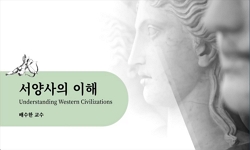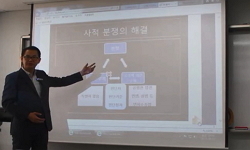陶厓 洪錫謨(1781~1857)의 「游燕藁」에 실려 있는 <皇城雜詠>은 조선 문인의 눈에 비친 19세기 초반 연경의 모습을 시로 표현한 작품이다. 「유연고」는 1826년에 도애의 부친인 薰谷 洪羲...
http://chineseinput.net/에서 pinyin(병음)방식으로 중국어를 변환할 수 있습니다.
변환된 중국어를 복사하여 사용하시면 됩니다.
- 中文 을 입력하시려면 zhongwen을 입력하시고 space를누르시면됩니다.
- 北京 을 입력하시려면 beijing을 입력하시고 space를 누르시면 됩니다.

홍석모의 <황성잡영(皇城雜詠)> 소고(小考) -조선인의 눈에 비친 19세기 연경의 시적 형상화- = Speculation on Hwangseong Jabyeong Written by Seokmo Hong -Poetic Imagination of 19th Century`s Yeongyeong from Joseon People`s Perspective-
한글로보기https://www.riss.kr/link?id=A75389157
- 저자
- 발행기관
- 학술지명
- 권호사항
-
발행연도
2008
-
작성언어
-
-
주제어
황성잡영 ; 皇城雜詠 ; 한시 기행집 ; 연작시 ; 청의 문화 동경 ; 도시문화 ; Hwangseong Jabyeong ; realization of cultural ; civil ; commercial advancement ; new sense of value
-
KDC
810
-
등재정보
KCI등재
-
자료형태
학술저널
-
수록면
229-258(30쪽)
- 제공처
-
0
상세조회 -
0
다운로드
부가정보
국문 초록 (Abstract)
陶厓 洪錫謨(1781~1857)의 「游燕藁」에 실려 있는 <皇城雜詠>은 조선 문인의 눈에 비친 19세기 초반 연경의 모습을 시로 표현한 작품이다. 「유연고」는 1826년에 도애의 부친인 薰谷 洪羲俊(1761~1841)이 동지정사로 연행을 떠나게 되자 도애는 子弟軍官의 자격으로 陪行을 하게 되는데, 이 때 여행 과정에서의 견문을 한시로 기록한 일종의 기행시집이다. 이 가운데 <황성잡영>은 도애가 청의 수도인 연경의 모습을 7언 절구 100首의 연작시 형태를 통하여 집중적으로 그려낸 것이다. 도애의 「황성잡영」에는 청에 대한 상반된 인식이 엇갈려 나타난다. 아직도 잊지 못하는 숭명의리정신과 그에 바탕한 우리 민족의 굴절된 역사에 대한 안타까움이 여타 연행록과 큰 궤를 같이 하는 사고방식이라면, 청의 발달한 문화, 문물, 상업 등에 대한 현실 인식의 바탕위에 그에 대한 부러움과 청조의 실질적인 지위를 어느 정도 긍정적으로 받아들이는 모습에서 도애의 세계관이 남다른 것을 볼 수 있다. 도애는 민속과 민풍에 많은 관심을 가지고 일생을 통해 꾸준히 採錄하였는데, 이러한 행위의 근저에는 민중에 대한 사랑과 아울러 그가 영위하던 도시문화에 대한 긍정적인 사고가 자리 잡고 있다. 도애는 연행을 통하여 이런 관심을 중국까지 확대하였는데, 그것은 중국의 발달된 문화를 소개하는 한편 발전적인 방향으로 수입하고자 하는 의도가 깔려 있다. 「황성잡영」은 19세기 초반 조선의 문인이 중국의 수도인 연경의 곳곳을 객관적으로 살핀 바탕 위에 현실의 세계를 긍정하고, 나아가 발전적인 중국의 문물과 이에 바탕한 도시문화를 새로운 가치관으로 바라보는 작품이라 할 수 있다.
다국어 초록 (Multilingual Abstract)
`Hwangseong Jabyeong`, which is composed of 100 sets of a quatrain with 7 Chinese characters in line in Yuyeongo, is a record of diverse figures of life in Yeongyeong based on the citizen`s view in 19th century. This writing depicted Yeongyeon`s daily...
`Hwangseong Jabyeong`, which is composed of 100 sets of a quatrain with 7 Chinese characters in line in Yuyeongo, is a record of diverse figures of life in Yeongyeong based on the citizen`s view in 19th century. This writing depicted Yeongyeon`s daily scene with two points of view in place (inside and outside of a palace). Do-e illustrated, in front part of the writings, overall figures of the palace, securing a bit of objective view point on the Ching dynasty. Outside of the pace, Do-e demonstrated commercial activities in abundant resources and urban life customs and festivities of average citizens based on a comfortable and romantic living. Different apprehensions on the Ching dynasty were laid in Do-e`s `Hwangseong Jabyeong`. While the pathos on the resident pre-Ming spirit and the national history of distortion based on the spirit would be a parallel way of thinking with Yeonhaengrok, a positive attitude to adopt a practical status of the Ching dynasty in an enviable fashion based on the realization of cultural, civil and of Ching would be Do-e`s another outlook on the world. Do-e showed a deep interest in folk customs and manners and continuously transcribed them, in which his affection for people and his positive contemplation of urban life he had enjoyed were involved. He expanded this interest to China through Yeonhaeng, which not only introduced the advanced culture in China, but displayed his intention to import this culture in an expansive manner. `Hwangseong Jabyeong` would be evalu on the basis of the objective ground that an 19th century`s man of letters looked all around China, and further, that contemplated China`s civilization and its fundamental civil culture with a new sense of value.
동일학술지(권/호) 다른 논문
-
페미니즘적 시각에서 본 「무정」 -가부장제 이데올로기에 희생된 젊은이들-
- 민족어문학회
- 한승옥 ( Seung Ok Han )
- 2008
- KCI등재
-
- 민족어문학회
- 최석재 ( Suk Jae Choi )
- 2008
- KCI등재
-
- 민족어문학회
- 조민하 ( Min Ha Jo )
- 2008
- KCI등재
-
17세기 전반 누정기(樓亭記) 창작의 일양상 -신식(申湜)의 "용졸재(用拙齋)"에 붙인 기문(記文)을 중심으로-
- 민족어문학회
- 안세현 (
- 2008
- KCI등재




 KCI
KCI KISS
KISS






